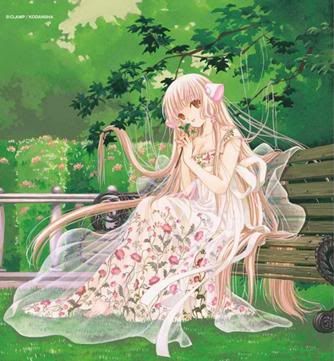I decided to rewatch
Neon Genesis Evangelion for the first time in two years. I enjoyed it as much as I ever did, and it gives me an excuse to talk about something important to my experience with the series: the reason I don't ship Kaworu x Shinji.
It might be a tough thing to justify, when it seems like everything should be in place for me to ship it. I like both characters, find their rapport convincing, and I'm not homophobic (though this might make me look like I am). But I believe Kaworu plays a symbolic, ironic role that makes shipping him with Shinji a contradiction of what the series is trying to convey. That, and I don't ship anyone in Evangelion because all relationships in the series are dysfunctional, so I don't see the appeal of exploring the couples.
Anyway, Kaworu is a character that "needs" to die because he represents an unreal idealism that contradicts the rest of the series and the lessons Shinji must learn. Shinji must reject Kaworu in order to accept the real world in all its flaws, rather than retreat into the company of an idealized companion. It parallels Shinji's ultimate fate in both the television series' final episodes, and the film
End of Evangelion.
In both versions of the ending, which may or may not be concurrent, Shinji Ikari rejects the comfort of a closed-in world for the experience of real humanity, however the narrative defines it. In the TV version he is moving from a closed-in world that is part of his wishes, to...something. Perhaps it is acceptance of the world of Instrumentality, the merging of all souls into one being, perhaps not.
In
End of Evangelion, it is slightly more clear-cut. The remnants of Rei Ayanami give Shinji Ikari the ability to determine the direction of Instrumentality. At first he wishes that everyone would simply die, because the hates the world after what's happened to him. In response to his wish, the fused Rei/Kaworu/Lilith/Adam being initiates Instrumentality.
Even though Instrumentality is designed to eliminate the fundamental loneliness of humanity, and Shinji might've been happy inside it, he eventually overcomes his hatred of humanity to declare that he wants to be in the real world, even though it can be painful to exist there. Thus, he breaks Instrumentality, the fused being falls apart, and he returns to earth, with everyone having the potential to also return.
Even though Shinji isn't conventionally rewarded for his conviction, ending up currently alone on a strange, red Earth and strangling the first person to appear beside him, the choice he made is still meant to be the moral one, since it was exactly what the story was building up towards. Choosing Kaworu would be the opposite of what the story was building towards.
Just like Instrumentality could represent a cocoon preferable to real existence, Kaworu also represents a love preferable to the real existence, both potentially free of fear and uncertainty. Asking if Shinji and/or Kaworu are "gay" isn't the important question. The relationship between Kaworu and Shinji is deliberately unnatural in its speed and depth, so it can't be considered part of the characters' "ordinary" sexuality.
Instead, the relationship is beyond ordinary, beyond the "norm" of Shinji's existence. And Shinji does not fall in love with Kaworu as a person, but as an ideal. Shinji is not capable of a healthy, ordinary relationship, accepting another being with all their faults and flaws. Instead, he is unsure of what he wants, but so trapped in his own mind that he can't open up to a real person. It is a prefect situation for an unreal person to appear, and make the outcome more effective.
When Kaworu appears, Shinji has lost everything, or it has been corrupted. His overtures to his father were crushed with Toji's entry plug. His school friends all have to go because his city has been destroyed, including the injured Toji. Asuka, whom he masochistically looked up to, has had a complete breakdown, no longer being the "hero" he thought she was. Rei and Misato are both distant, Rei being a new clone has lost the tentative bond between them. And both of them now represent a disturbing mix of maternity and sexuality, Rei because she is his mother's clone, Misato because she was Shinji's mother figure, but reached for him on that bed.
Under these conditions, Kaworu appears even more like a dream than he otherwise would. He asks for nothing and gives everything, compliments Shinji in ways that would seem absurd to all the jaded folks watching ("I think I may have been born to meet you, Shinji Ikari"), and is immediately interested in Shinji as a person, and always maintains a calm, stable air, asking for nothing. His gender might also serve to further distance Shinji from his real world of corrupted potential love interests.
To further emphasize that Kaworu is not meant to be taken at face value, he makes cryptic pronouncements about the nature of man, and Misato and Hyuga race to figure out just what Kaworu is. The audience knows something is up, as they are being primed to accept this swift attachment between the two characters as building to something greater and darker than just Shinji getting his wish.
The bonding between Kaworu and Shinji is, in short, aware of its unreality and works with it. Kaworu is not realistic. Kaworu is not human. He doesn't fit with the world of Evangelion, and not just because he is an Angel. In this series, a perfect companion, who asks nothing but your happiness, will not simply appear and solve everyone's problems. He does not fit with what we know of humanity, both the real version and all the flawed example seen in
Evangelion. And, so he must be killed. It's not about Kaworu being "too good" for that world, in the sense that we are all supposed to mourn for the death of an "angelic" innocent, but that he just doesn't fit in.
Kaworu's abrupt entrance and exit further underlie the way he cannot "exist" according to the rules of the story. If Kaworu were around for longer, perhaps the narrative would need to define him as an individual character, fleshing him out beyond his symbolic role. But as he exists in episode 24, Kaworu's small existence lets him be just a symbol, and it fits him because of the role he plays.
Kaworu's betrayal also doesn't mean he is not an idealized character. Even though Shinji is angry with him, the scene ends with Kaworu still being a kindly figure. He tells Shinji that he is the one who deserves to live, and sacrifices himself to save Shinji and, by implication, humanity. Shinji is in turn destroyed emotionally by having to kill Kaworu, proving that the bond between himself and Kaworu did not disappear. He still views Kaworu as an idealized figure, and one worthy of existence.
The moment of betrayal, however, raises a question: was Kaworu lying all along, and does it affect the interpretation of Kaworu as a symbol? SEELE apparently sent Kaworu to NERV to initiate Third Impact in the guise of a replacement EVA pilot. Some fans have inferred that Kaworu's overtures to Shinji were part of the infiltration.
Yet since Kaworu can just use his powers to manipulate EVA-02 and open Terminal Dogma, a close relationship with Shinji is not required for infiltration. And if Kaworu were lying, he would not have left his mission incomplete and declared he was giving his life up for Shinji. It's still possible for Kaworu to be a liar if one assumes Kaworu was part of a design to break Shinji's mind, but as with much of Evangelion, the exact details are open to interpretation.
In
End of Evangelion, SEELE wishes to break Shinji's mind as part of the process of Instrumentality, but it is not clear if Kaworu's appearance and death was designed to further that breakage. It might be possible.
However, the interplay between Kaworu and Shinji, while not destroyed if Kaworu had ulterior motives, is the most effective if a viewer assumes Kaworu was being earnest. The reason why he would bother with Shinji would remain unexplained, but they aren't that important. What is important is what Kaworu represents, as outlined above.
There are other versions of Kaworu, namely the ones in Yoshiyuki Sadamoto's manga adaptation, and in the Rebuild movies. Rebuild Kaworu hasn't done much yet, and it is possible he may play a completely different role. He has once said he would like to make Shinji happy, but if that will lead to something similar to his television role is unknown.
Characters aren't obligated to be the same throughout each iteration, but no other version of Kaworu has been as effective and affecting, and it's no surprise the original Kaworu would be hard to follow up on. Personally, I'd like to see if a work could alter Kaworu's television role without removing what made it interesting, perhaps giving him more depth of character but still managing to be inhumanly idealized. But that, however, is coming from a viewpoint of someone who already considered TV Kaworu to be the ideal.
Sadamoto's version of Kaworu has been nicknamed "Evil Manga Kaworu" because he once snapped a stray kitten's neck out of ruthless pragmatism. But when he becomes part of the main cast, this time earlier than before, he's more obnoxious than sinister. He lacks a sense of appropriate social boundaries and is questioning of human emotions, but in a way that makes him seem like a run-of-the-mill creep or a sullen brat rather than a thoughtful "alien". Shinji is also actively hostile towards him, and a kissing scene is played for his disgust rather than confused titillation.
I can imagine someone cheering Sadamoto for removing the taint of romanticism and idealism and a "shallow" character from the storyline. However, like I said, the original Kaworu was not meant to be taken completely at face value; his alien nature and brief betrayal show that
Evangelion did not suddenly lose its teeth when Kaworu appeared. We all know Gainax wouldn't be above creating a character to draw in fangirls/yaoi fangirls, and it'd be unsurprising if that was another purpose beyond Kaworu, but that doesn't make him this ill-fitting example of sugary romanticism, especially in light of the relentless marketing of the female cast. Kaworu was never a misstep into fantasy land, but a justifiable part of the series narrative.
Therefore, to be annoyed with "Evil Manga Kaworu" is not about pearl-clutching that such a "sweet" character became so nasty, but being annoyed at the simple act of change, and that what in its place is just plain boring.
Going back to the original Kaworu, he's a good example of a character that doesn't seem to fit with his environs, before you realize how well he actually does. Some of what Kaworu ended up representing could be accidental, but it's effective nonetheless. It questions the notion of the idealized companion without beating viewers over the head with it, and manages to justify a character that could be perceived as shallow. In the process, though, it also enforces the strict pragmatism at the end of Evangelion, and ensures that the idea of a romantic relationship between Kaworu and Shinji would be greatly missing the point. Sometimes "the point" isn't what shipping is really about, but it still makes me want to avoid supporting the pairing.




